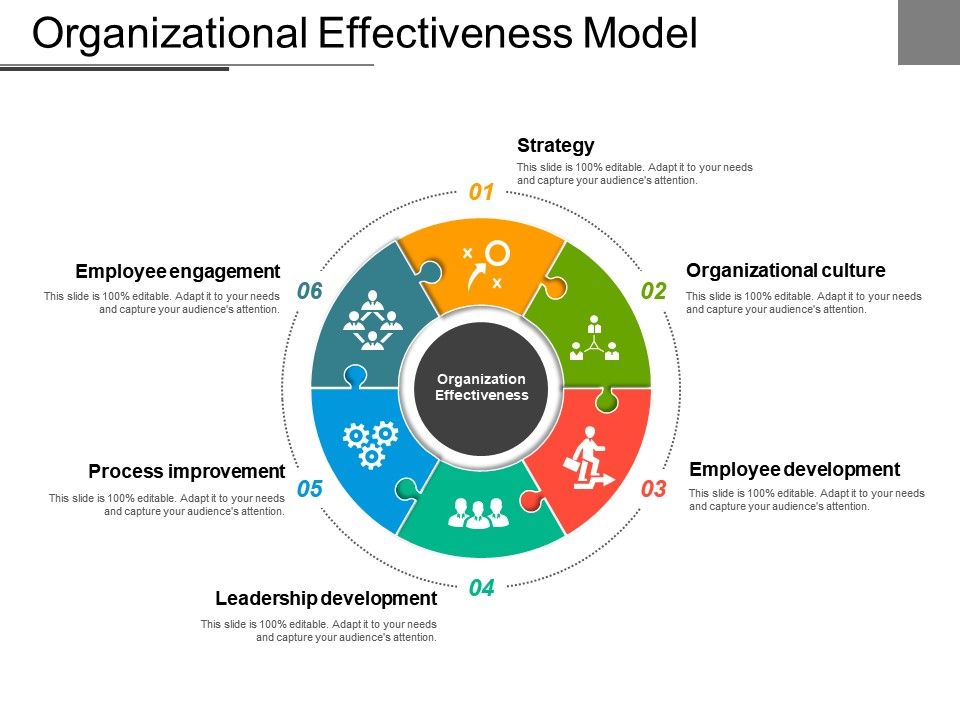THE RELATIONSHIP BETWEEN LEADERSHIP AND ORGANISATIONAL PERFORMANCE
1.
ABSTRACT
Organizations, agencies, industries and even countries get an effective leadership style from their organizational performance. Leadership helps to achieve set goals by them, thereby improving the performance of that particular facet. Several researchers have examined the relationship between them. Most have concluded that transformational leadership has a significant impact on changing organizational practices. However, in academic literature, there is not enough theoretical evidence to suggest that there is a clear association because both the concepts of organizational performance and leadership have no absolute statements and hence a clear concise relationship is hard to be found.

1.
LITERATURE REVIEW
It is
well understood in recent times that the performance of the employee matters in
an organization, but little has been dealt with the leadership influencing
performance
2.1
Leadership
Leadership
is an extremely powerful term, but it is often very weakly represented.
According to Jiménez-Jiménez (2011)
leadership is defined as a concept that eludes the behaviour in an organization and takes a completely different and
complex form. Hence there have been
endless debates and discussions on leadership, but none of us has clearly
defined it sufficiently. In simple words, it is still a very vague concept that
scholars are working on
Various
scholars

2.2
Transformational and Transactional Leadership
In both
of the core styles too, there are broad concepts and various highlights by
numerous authors. In a political seminar, Jacobsen
(2015) focused on the moral aspects of transformational leadership.
According to Yukl, the transformational leaders ‘transform’ by offering their
followers a sense of purpose. The purpose is linked to moral values and ethical
practices that motivate the employee to perform better in their organization
and be more innovative and focused on their workings. Knippenberg and Sitkin in
2013 contradict this idea and states that both the core concepts of leadership
in the modern world have several components which are necessary to understand
the relationship behaviour
In
transactional leadership again, components are available which is the subject
to a lot of discussions is again. According to Meier and O'Toole (2014), contingent rewards, passive
exception and active exceptions have been identified. Contingent
rewards are about rewarding the employees for achieving a set goal. The
management in an organization also takes up an active role where the leader
continuously follows the activity of the follower and suggests correctional
methods. This directly links to the organizational performance getting better. As
stated by Abdulla Ahmed Al-Ali, (2017) in
the passive exception, the leaders wait until something has gone wrong and then
suggests correctional methods.

2.3
Performance
Like
leadership, performance is also a very broad concept and can be defined differently
by different scholars. Cambridge (2015)
defines performance as how well a person does a particular activity or work.
However, in organizational behaviour,
performance has various levels and aspects which need to be analyzed before making a conclusion. The three basic
concepts as stated by Otara (2011);
organizational, team and individual level.
Coming to
the concept of Yukl again, any organization can be defined as an instrument of
purpose
Team
performance is also a significant component of performance which deals with leadership. This is especially
helpful in relationship conflict where a task needs to be solved. De Dreu and
Weingart in 2003 stated that team performance and measures depend on product
quality, quality of decisions taken by the team and more. He does not state
that there is any relation between the leader individual. The stress is more on
the team as a whole. They further argue that leadership in this respect may
involve leading a team, but it cannot be the whole factor in judging an
organizational performance.
Diane et
al. state that there are arguments however on the individual performance where
‘role performance’ is of great importance. They stated importance on identity
and role theory were five key elements
were the influencing factor, namely job performance, career performance,
innovator performance, team performance and external organizational performance
(Puni, 2014).

2.4
Relation between Leadership and Organization
As stated
by Puni (2014) leadership is an
interpersonal relationship which thrives
in an organization characterized by two or more people working on a continuous
basis on the same set goal. Hence three major elements must be present for
leadership to thrive. Firstly, the management of the organization secondly, the
time people and thirdly the task and goals within an organization. Leadership
comes in this management level, where the leader uses the power of influence to
accomplish the set task using proper time management and human resources.
Looking
into other sources of leadership, organizational performance largely depends on
the energizing aspect of empowerment. Nam (2007)
states that great leaders empower others to translate their vision into
reality. This is again linked to transformational leadership, where the
empowerment as an instrument of transformation. The ‘charisma’ factor also goes
hand in hand. He stresses on the fact that rewards and punishments are fewer
effects when compared to empowerment.
However
several other theories also exist which link the above concept to the
Machiavellian view of power and empowerment. This is seen as a negative sense
because empowerment means making someone do something that they otherwise would
not do. It contradicts with their own free will and holds a negative impact on
the organization. This empowerment leads to the authorization
of power, which ultimately is a cause for rebellion, conflict and discord. The power struggle and power shifting
often undergo which can lead to a sea of change in the organization. Here,
individuals who develop their own resources participate in the conflict of
power and presents grievances and claims regarding tasks and organizational behaviour. The ability to act increases and
thus the management in power faces a downfall. Change is a major consequence which is seen by those who are powerless (Boerner, 2007).

In other
academic literature that are two schools of thought governing the relationship;
the constraints school and the leadership school. There are also contradictory
statements which mention that leaders
have a very limited role when it comes to performance. This is mainly due to
contextual constraints and various aspects of internal and external influences
of the organization. Hart (2014) states
that the impact of leadership performance is nothing but a social construction.
It is simply a psychological factor and has no impact whatsoever with the
results an organization produces. The cause and effect here are hard to
separate and leadership is only seen as a compensation method for the public
On the
other hand, there are other researchers who argue that the top management of
any organization has sufficient influence on the performance Wart (2013). Wart states that leaders have a strategic choice in influencing a decision of
the firm. An organization’s strategy, culture, roles and responsibilities are significantly influenced by the leaders.
They are the motivational factor in an organizational which leads to better
performance for the future.

2.5
Empirical Evidence for the Relation between Leadership and Performance
The
relationship between the two concepts has been a subject for empirical studies
for generations. Scholars and researchers have used different types of
conceptualization techniques between the two variables like transactional and
transformation leadership and so on. Researcher Seaver
(2010) mentioned in terms of an independent
variable there can be an endless number
of outcomes that can be achieved within an organization. Relevant outcomes
involve citizenship behaviour, the attitude of the employee, the behaviour of the performance of the employee and
many such others. In these contexts, the
relationship between the two is studied in different organizational and
sectorial contexts. Such detailed and numerous empirical studies raise an
important question that where should a researcher start when assessing the
impact. The most recent evidence can be seen in Wang
(2010) that since the 90s five major researchers and meta-analysts have
proven to build an accurate relationship between the two concepts. Wang further
states that ‘satisfaction with the leader’ is the strongest motivational factor
that looms in an organization. The overall performance needs to be effective
and that can only be achieved through internal and external satisfaction levels
in an organization. The relation between the two can never be generalized.
Scholars
like Bass (2010) further modifies the
theory of Wang to include more variables related to performance. They state
that leadership effects subordinate performance and subordinate satisfaction.
If subordinates are satisfied and motivated, this will automatically lead to the
performance of the firm. Leadership effectiveness needs to be measured where
the subordinate factor is the benchmark. Furthermore, the study urges future
researchers to avoid the common source bias and use the factors from various
independent sources.
:max_bytes(150000):strip_icc()/2795316-what-is-laissez-faire-leadership-5b2176d343a10300369294a1.png)
Another
theory of leadership that is related to satisfaction is Laissez-faire
leadership
Another
study related to satisfaction Saleem (2015)
focused on the effects of transformational and transactional leadership on the
levels of satisfaction with a firm. Several satisfaction levels like follower
leader satisfaction, job satisfaction, follower motivation, the performance of the leader and performance of
the team were studied. The study showed a positive relationship when it came to
team performance. Through this study, it
has been predicted that transformational leadership directly influences the
outcome controlling the transactional leadership. It was concluded that
transformational leadership was the strongest when it came to team or group
performance of the organization but it was the weakest when it came to
individual-level performance. To be more specific, it can also be said that the
relationship between transformational
leadership and individual level performance is stronger for contextual
performance rather than a task-based performance in an organization.

2.6
Conclusion
Drawing a
conclusion from the above-mentioned analysis it is noticed that performance
varies when the strength of the correlations varies. An important point that
needs to be highlighted is that it is quite difficult to evaluate the impact of
leadership on performance. According to Belle
(2013), early academic research has a considerable
impact that stresses the impact of leadership on performance. But nowadays the
variables are independent as several other influence factors internal and
external can be found. In recent times a balance between the constraint school
and the leadership school seems to have shifted in the favour of the latter.
2.
REFERENCES
Abdulla Ahmed Al-Ali, S. K. S. M. A.-N. A. S. S.,
2017. Change management through leadership: the mediating role of
organizational culture. International Journal of Organizational Analysis, 25(4),
pp. 723-739.
Bass, B. A. B., 2010.
MLQ multifactor leadership questionnaire technical report, s.l.:
Thousand Oaks.
Belle, N., 2013.
Leading to Make a Difference: A Field Experiment on the Performance Effects
of Transformational Leadership, Perceived Social Impact, and Public Service
Motivation. Journal of Public Administration Research and Theory , 1(24),
pp. 109-136.
Boerner, S. E. S. G.
D., 2007. Follower behavior and organizational performance: the impact of
transformational leaders. Journal of Leadership and Organizational
Studies, 3(13), pp. 15-26.
Cambridge, 2015. Performance,
s.l.: Cambridge Online Dictionary .
Eagly, A. H.-S. M. C.
E. M. L., 2003. Transformational, transactional, and laissez-faire
leadership styles: A meta-analysis comparing women and men., s.l.:
Psychological Bulletin.
Hart, P., 2014. Understanding
Public Leadership. Utrecht: Palgrave.
Harwiki, W., 2016. The
Impact of Servant Leadership on Organization Culture, Organizational
Commitment, Organizational Citizenship Behaviour (OCB) and Employee
Performance in Women Cooperatives, s.l.: Periodical of Social and
Behavioral Sciences.
Jacobsen, B. A. B.,
2015. Is Leadership in the Eye of the Beholder? A Study of Intended and
Perceived Leadership Practices and Organizational Performance. Public
Administration Review, 6(75).
Jiménez-Jiménez D,
S.-V. R., 2011. Innovation, organizational learning, and performance.. Journal
of Business Representation, 4(64), pp. 408-417.
Johnson, E. W. T. E.
A., 1998. The Role-Based Performance Scale: Validity Analysis of a
Theory-Based Measure. The Academy of Management Journal, 5(41).
Kashan Pirzada, D. W.
G. A. M. K. A., 2016. 3rd Global Conference on Business and Social
Sciences (GCBSS-2016) on “Contemporary Issues in Management and Social
Sciences Research”, Kuala Lumpur, Malaysia, s.l.: Periodical of Social
and Behavioral Science.
Knippenberg, V. S.
B., 2013. A Critical Assessment of Charismatic—Transformational Leadership
Research: Back to the Drawing Board?. The Academy of Management Annals, 1(7).
Montes, F. M. A. M.
V., 2005. Influence of support leadership and teamwork cohesion on
organizational learning, innovation and performance: an empirical
examination. Technovation, 10(25), p. 1159–1172.
Nam, S., 2007. How
innovation willingness influences the public organizational performance relationship:
developments in how stakeholders (external organizational factors) and
internal management affect, New Jersey: Rutgers The State University of
New Jersey.
Otara, A., 2011.
Perception: A Guide for Managers and Leaders. Journal of Management and
Strategy, 2(3).
O'Toole, J. M. J.,
2014. Public Management, Context, and Performance: In Quest of a More General
Theory. Journal of Public Administration Research and Theory, 1(25),
pp. 27-256.
Pollitt, C. H. P.,
2011. Talking About Government. Public Management Review, 5(13), pp.
641-658.
Puni, A. S. O. a. A.
O., 2014. The effect of leadership styles on firm performance in Ghana.. International
Journal of Market Studies, Volume 6, pp. 177-185.
Richard, W. A. R. B.
A., 2011. Dimensions of Publicness and Organizational Performance: A Review
of the Evidence. Journal of Public Administration Research and Theory, 3(21),
pp. 301-319.
Saleem, H., 2015. The
impact of leadership styles on job satisfaction and mediating role of
perceived organizational politics. Journal of Social Behavioral Science, pp.
563-569.
Seaver, D., 2010. Effect
of transformational leadership in a cross-cultural organization: a case
study. , s.l.: Capella University..
Skogstad, A. S. T. M.
S. H., 2007. The destructiveness of laissez-faire leadership behavior.. Journal
of Occupational Health Psychology, 12(1), pp. 80-92.
Stewart, L. B. R.,
2000. Team Structure and Performance: Assessing the Mediating Role of
Intrateam Process and the Moderating Role of Task Type. The Academy of
Management Journal, 2(43), pp. 135-148.
Wang, G. O. S. C. H.
C. E., 2001. Transformational Leadership and Performance Across Criteria
and Levels: A Meta-Analytic Review of 25 Years of Research, s.l.:
Researchgate: Group & Organization Management .
Wart, M., 2013.
Administrative Leadership Theory: A Reassessment After 10 Years. Journal
of Public Administration, 3(91), pp. 521-543.
Yukl, G., 2002. Leadership
in organizations, New York: Prentice-Hall.

Comments
Post a Comment